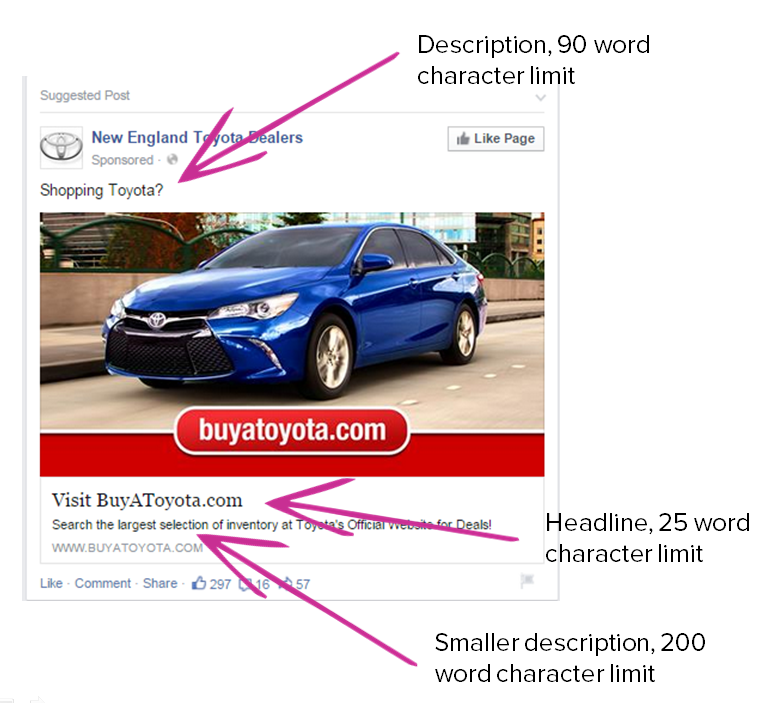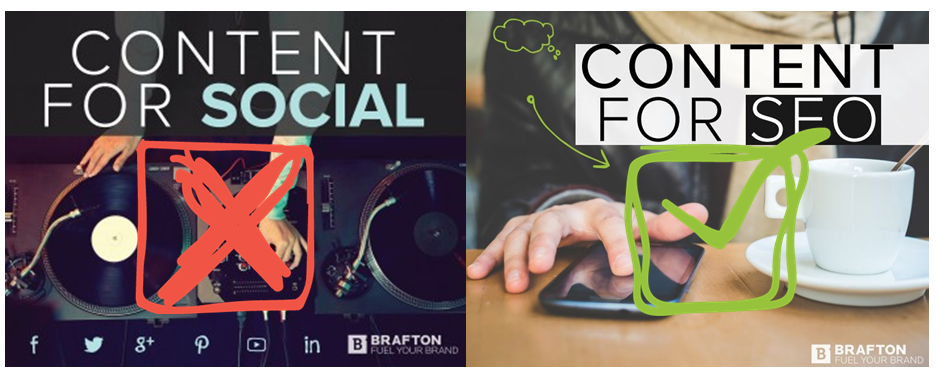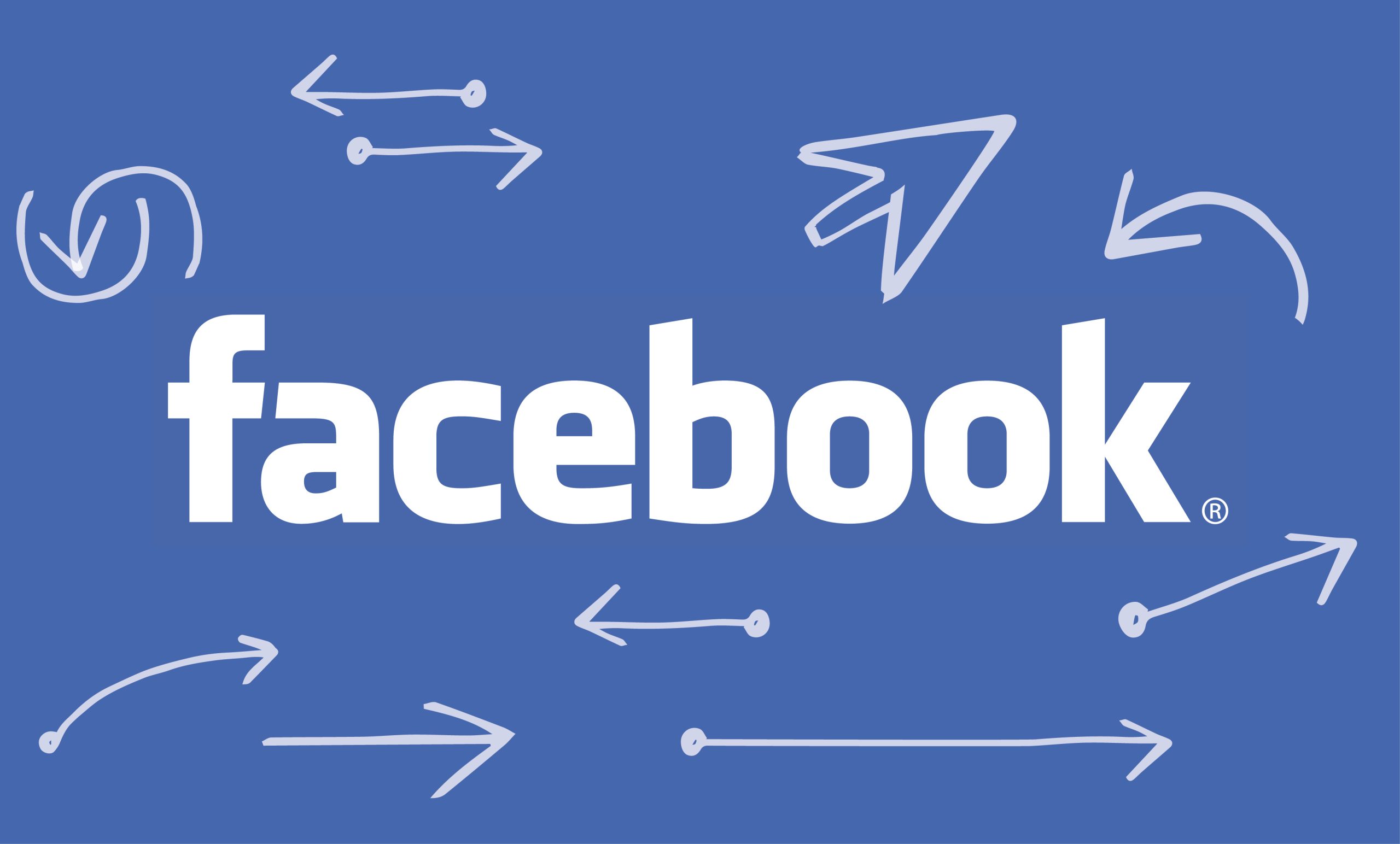Considering setting up a Facebook ad? You’re among the majority of marketers who realize organic Facebook reach doesn’t exist the way it used to for brand pages, and advertising is an effective way to get your content in front of your target audience.
When clients ask me about social ads, there are a few reasons why Facebook is always the first network I recommend. Facebook not only has the largest user base (1.3 billion monthly active users), but it’s been in the business of advertising for a while. While Facebook is constantly tweaking and improving its ad product, it has the most information on its audience and the targeting options are incomparable on other networks. Simply put, it’s very easy to find a wealth of people while keeping your audience specific.
Here’s a look at how to successfully set up your first Facebook ad – including tips from our social ads specialist Michelle Higuera:
1. Determine your budget
 In an ideal world, you’d want to start out with several different ads, test the waters and determine which format works best. Since you’re likely starting out on a budget, it’s important to get the most bang for your buck up front, but restrict yourself to a certain amount of money. If you’re throwing cash in aimlessly, you might as well be throwing it away. (money/baby gif?)
In an ideal world, you’d want to start out with several different ads, test the waters and determine which format works best. Since you’re likely starting out on a budget, it’s important to get the most bang for your buck up front, but restrict yourself to a certain amount of money. If you’re throwing cash in aimlessly, you might as well be throwing it away. (money/baby gif?)
For our clients, the absolute lowest we recommend is $40 per ad. With any advertising strategy, the more you put in to it, the more you get out of it. If you look at the averages, you can determine a reasonable price for your goal. Facebook is typically between $.50-$1 per click.
2. Decide on your end goal
Are you looking to increase followers on your Facebook page? Increase conversations on your page? Direct users back to your site? Generate sales or leads from your website? These are all questions you need to ask yourself upfront, because your end-goal largely impacts what you’re going to feature within your ad.
Here are a few ideas to consider based on your goal:
-
Generate sales or leads on your website with an ad that features a product or a downloadable asset, like an ebook.
-
Engage your audience with a video ad. (Videos are the most shared content format on Facebook.)
-
Bring in new followers with a post that will be universally appreciated by your target audience. This is one situation where it won’t work to feature a niche topic or an “inside joke” that will only appeal to a percentage of your audience. Humor is great – but if it misses the mark – your joke will leave your potential new followers confused and disinterested.
3. Write compelling copy
Check out the picture below to see where you need to create copy for your ad. Although it’s true that the reader is likely to look at the picture and the top description first – you should optimize the entire post as if the reader is going over it all diligently.

When we’re creating copy for ads, we suggest the following:
-
Be short and concise about the end value for the consumer.
-
Use action verbs and avoid a passive voice.
-
When possible, using images found on the landing page your ad is directing to can help reduce bounce rates. It re-enforces to the user that they have been brought to the website they were anticipating.
4. Create a strong visual
This is one instance where we’d highly recommend creating custom graphics. Shutterstock photos work, but this could be the first time a potential consumer is learning about your company – and you want to have an image that speaks to your brand’s aesthetic.
It’s important to remember that your ad image can only be 20 percent text. We use this website as a quick way to check out clients’ images.

5. Determine your target audience
There are a lot of different groups you can target with your Facebook posts, including: Location, Age, Gender, Relationship Status, Demographics, Language, Education, Financial, Career, Homeowner, Interests, Hobbies, Shopping Behavior, Mobile Device, Television Interest and Seasonal Events.
The key nuance for targeting is being specific without being too picky. You want to narrow your audience down to the right group of people, but you don’t want to limit yourself to someone so niche that there are only a few people who fit the description.
Typically my first thought when choosing an audience is “Who would I want to get stuck in an elevator with.” Who is the absolute perfect prospect for me. If this number is healthy (40,000 and above for nationwide clients), I’m done. If not, I start looking at who is partially qualified, who might have an influence over my perfect audience member, etc.
6. Run the ad – Monitor, analyze and test the results!
Launching the campaign can feel like crossing the finish line, but you’re far from finished. Now, the most important thing you can do is monitor the ad to determine what’s working and what isn’t. If people are clicking on the ad, going to a landing page on your website, but are leaving the page, it might indicate the ad doesn’t represent the product well (or it might be a problem with the landing page.)
Continue learning with these resources:
6 Metrics to measure for social media success [blog]
Need help with social media advertising? Contact us here.




